"Without Pet Sounds, The Beatles wouldn’t have made Sgt Pepper": Giles Martin on mixing The Beach Boys’ masterpiece in Dolby Atmos
Giles Martin's seasoned ears have brought The Beach Boys' hallowed Pet Sounds into the spatial audio realm with astonishing results. We spoke to Giles to learn more…
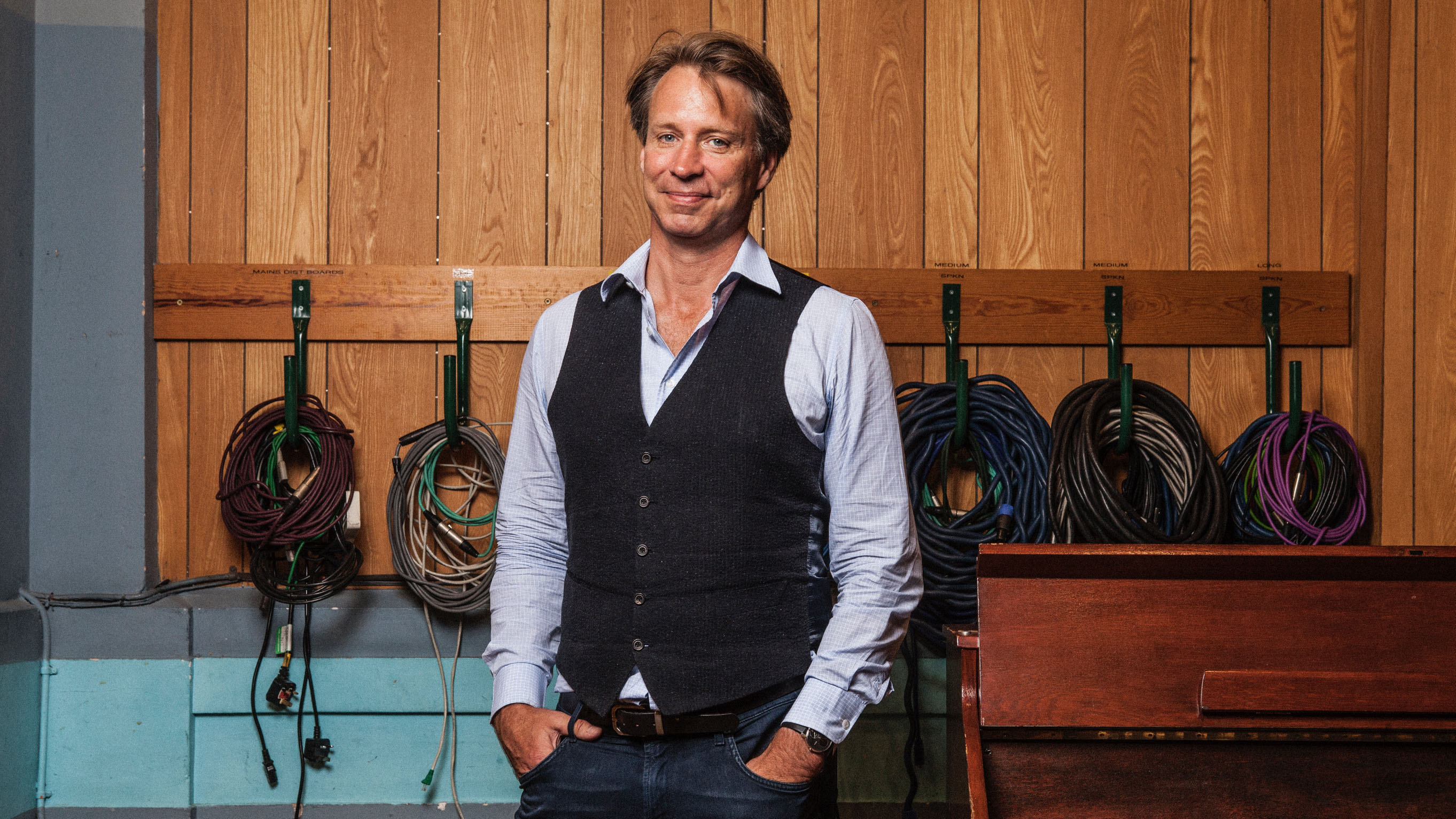
Conceived by The Beach Boys’ singular visionary Brian Wilson, 1966’s Pet Sounds represented a high watermark both in the history of pop music, and for the development of the recording studio as a creative hub.
Its rich instrumentation, beautiful songwriting and immaculate production would inspire the decade’s other forward-thinking hit-makers, The Beatles, to push the envelope even further, concocting Revolver and Sgt Pepper’s Lonely Hearts Club Band in the subsequent year. Both albums were openly indebted to Pet Sounds.
56 years on, and a new Atmos mix of The Beach Boys’ revered eleventh LP has just been completed. Helmed by Giles Martin, the acclaimed son of The Beatles’ producer George Martin, and a man who needs little introduction as a gifted producer in his own right.
We sat down with Giles prior to a special listening session of the new Atmos mix of Pet Sounds at the Dolby Screening Room in Soho curious to learn how Giles prepared to begin working on such an epic. “It’s quite tricky with something like Pet Sounds, it’s always tricky doing an album where the expectancy is so high. The album, because of its brilliant nature, is already immersive.” Giles explains.
“The fact of the matter is that mono can be immersive too – Sgt Pepper and Pet Sounds came out in mono, and people fell into them. You have to mix to the source. It’s the equivalent of restoring paintings, brightening up an old Dutch master’s work and making it bright. So it’s always a challenge. I was deeply honoured that they asked me to do it. Mark Linnet who made the 1997 stereo mixes is amazing, and we worked together on this.”
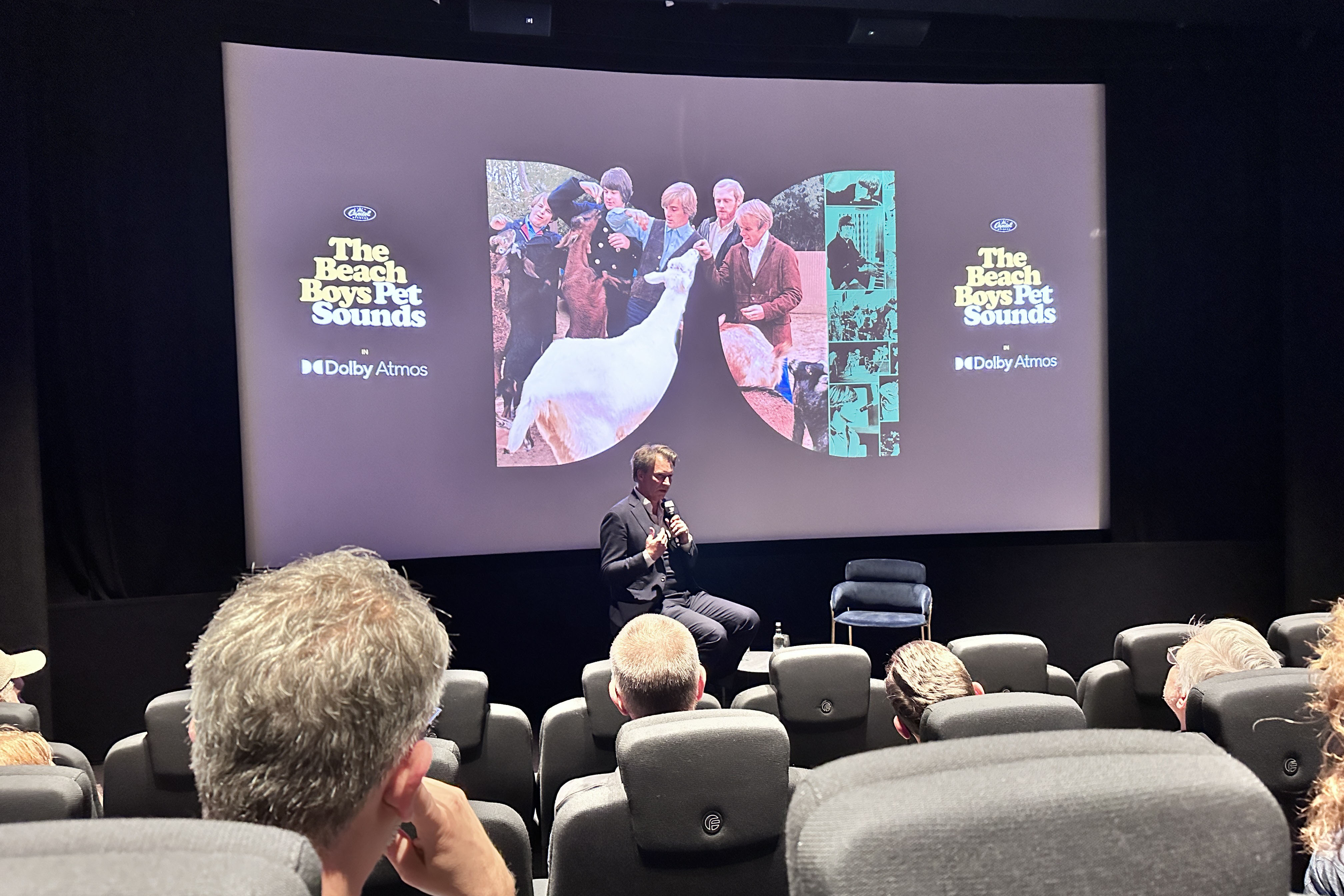
Made for these times
In terms of the source material that Giles and team had to work with, there were some gaps that needed to be filled. “There had to be a lot of audio restoration. There were elements missing. So we used a combination of the original master tracks and newly-sourced mix elements. There were a couple of vocal things that had to be taken off the mono. There’s an extracted vocal – which Mark had to extract originally for his stereo-mix – in You Still Believe In Me. Generally speaking, we had about eight tracks to play with. A lot of the instrumentation was on three different tracks, locked-in together.”
As his starting point, Giles decided to take on perhaps the record’s most beloved song. “You have to start somewhere, and I thought I’d start with God Only Knows, because it’s such an amazing song. It’s one of the greatest songs ever written. That can be challenging in itself. Then we went through the rest of the album in track order from then on. Then you go back and revise and revise and revise.”
Get the MusicRadar Newsletter
Want all the hottest music and gear news, reviews, deals, features and more, direct to your inbox? Sign up here.
You have to start somewhere, and I thought I’d start with God Only Knows, because it’s such an amazing song. It’s one of the greatest songs ever written
Having recently used the specially designed ‘de-mixing’ technology for restoring audio in the Peter Jackson-helmed Get Back project, as well as last year’s Revolver reissue, Martin opted to not use it for Pet Sounds. “Brian’s whole technique when making this record was similar to the Phil Spector ‘wall-of-sound’ approach. Brian was trying to create a new sound out of the combination of frequencies that are together. “The instruments have to be together in order to create that harmonic structure. Sometimes if you separate stuff you start hearing discord and sometimes ropey (but good) tunings. It seems that more people want to live in a flawless world, but I certainly don’t.”
So with the Atmos mix at least some separation, how did Giles balance Brian Wilson’s harmonious intent with the breadth of the spatial audio playing field? “With this, I’ve tried to create a little horseshoe room, so this is how Brian would have heard the songs when he was in the studio” Giles tells us, “A good thing we can do in Atmos is that we can spread the vocal harmonies further by using ADT (Automatic Double Tracking) which we’ve done. For God Only Knows I have five separate voices for harmonies. There’s three sets of backing vocal tracks, and two lead vocal tracks.”
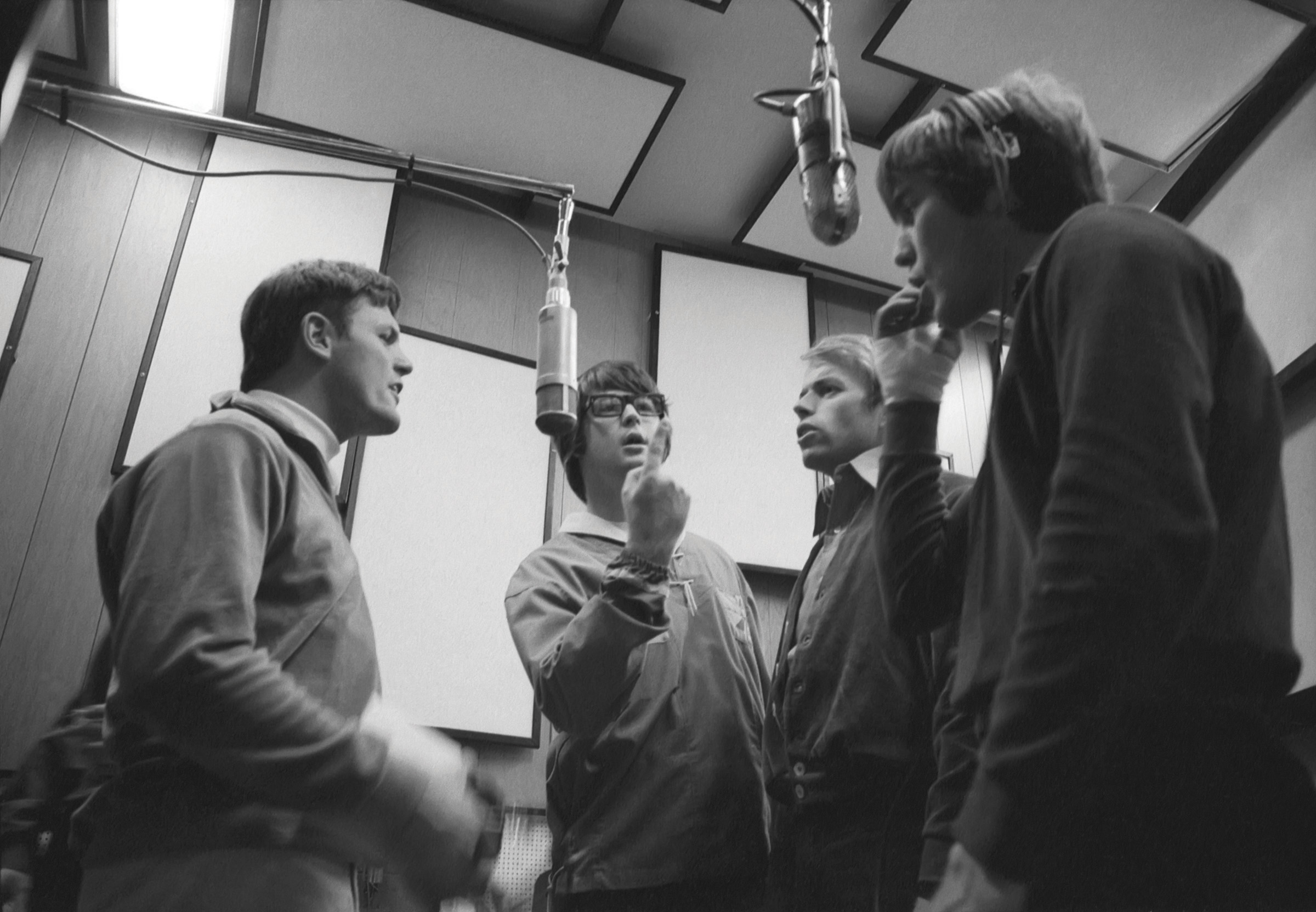
A hit with a toffee hammer
Working with the Dolby Atmos Renderer in Pro Tools, Giles manipulated the mixes in a multidimensional space. “When mixing in Atmos you can create objects and beds. The bed is basically the 7.1.4 mix but you can add height too. You can take a track and render it as an object.“
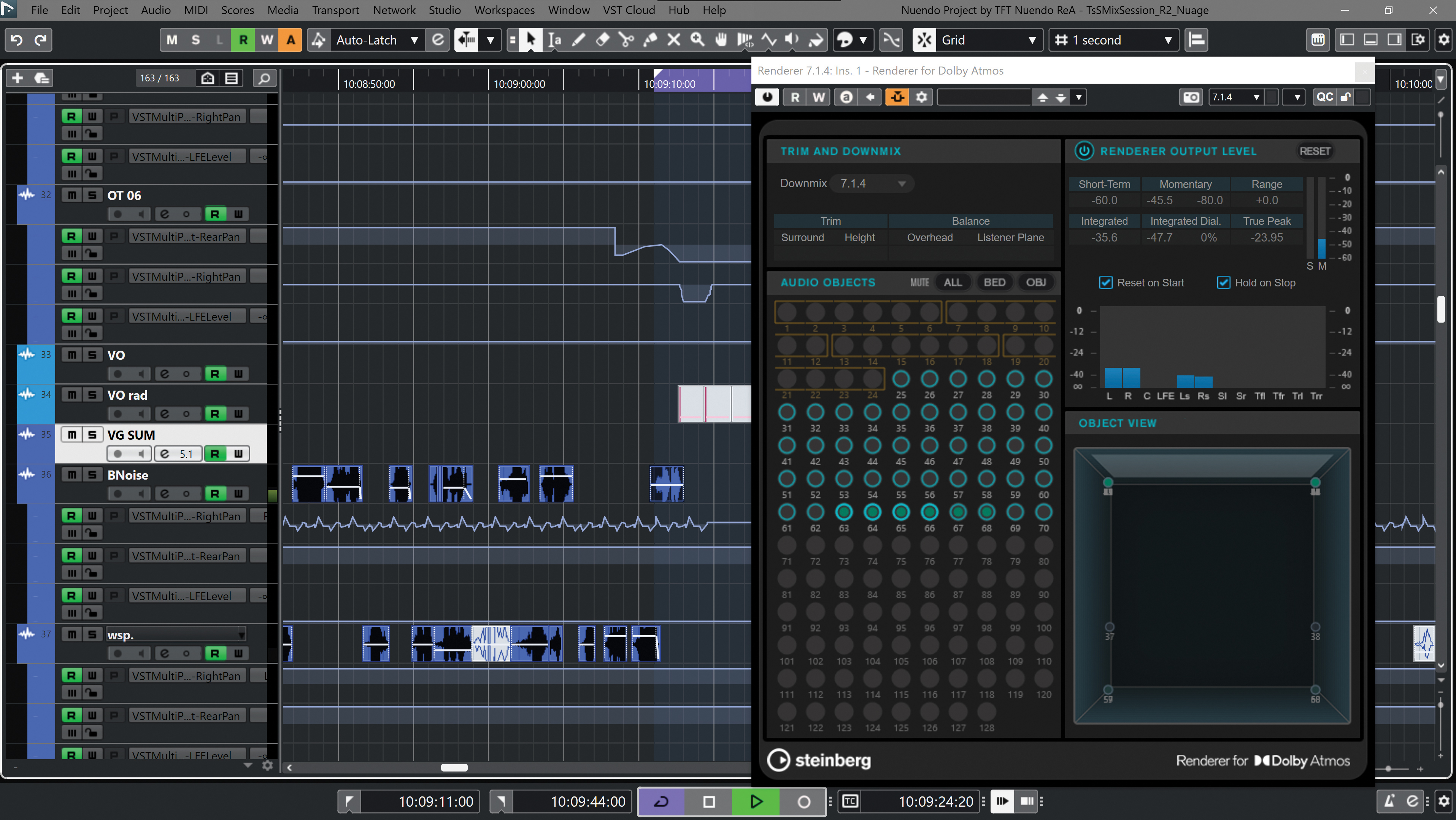
“The mixes vary song-by-song, it depends how much glue you want between the different tracks. Quite often what I was doing was keeping core elements fixed. I always have the bass central with what I call ‘horseshoe bleed’ around the left/right sides, then backing vocals come in behind you. It seems to make much more sense than having everything coming from everywhere, because then you just get disorientated and can get bored with it.”
For Giles, keeping those focal pillars is key. “I always saw surround sound as being mono that’s been hit with a toffee hammer. You have this central focus, which is where the power comes from. If things are too dispersed you lose the immediacy of it. It’s like being in an echo chamber. You need that directness from a focal source. Then other elements can materialise around you.”
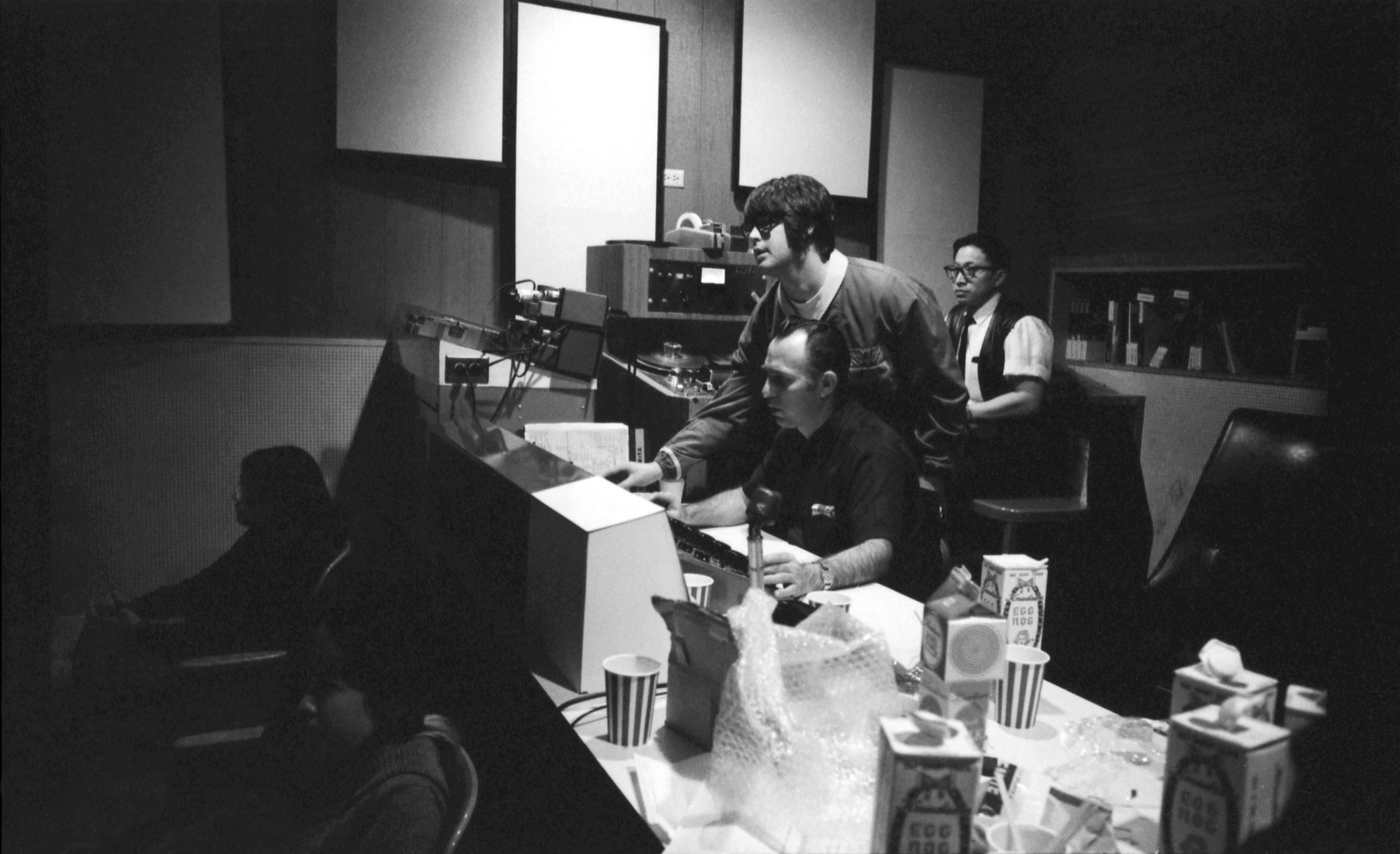
While the spatial audio mix of Pet Sounds is ostensibly presenting a new way of listening to this 56 year-old record, Martin decided that to maximise how the sound objects interact, a touch of reamping was required. “We reamp stuff in rooms, which is basically playing a source back and capturing new room reflections.
“You don’t really want to make a mix wetter but you can add some nice natural room ambience for the Atmos elements, so the ‘height’ elements have some room in them. You have to assess the reverbs accordingly. We do it pretty much all that time (if the budget’s there!) because it’s far better than using reverbs – it’s a short natural sound and it makes sense.”
Making it that much better
A great benefit of Atmos, and spatial audio generally, is the ability for listeners to interact with the tracks in different ways, simply by moving their head and ears around the sound field, different elements are emphasised. But, as Giles explains, keeping things focussed overrode any desire to be too off-the-wall with the panning.
“One thing that’s nice about Atmos is that you can move around a space and hear more of certain elements and have different experiences. But you still absolutely need that focus. You don’t want the vocals to disappear at any stage. All the lead vocals are double-tracked, so that means there’s two that are exactly the same. What I tend to do is pull them slightly apart so they’re not from a single point source. It just gives you a nice effect.”
Atmos is ultimately a delivery system. You can’t really ‘mix for’ a technology - you have to mix for a song
When asked if any tracks in particular lent themselves to the Atmos environment, Giles explained that in essence, each song did. “On this album there’s the instrumental tracks (Let’s Go Away for Awhile and the title track) where you can do crazy things. Then there’s all the sound effects at the end of the album which I can be a bit freer with and have them moving around the room.
”But, I personally don’t like going too overboard with panning and movement, I think it can get a bit gimmicky. Why would you move things around if you don’t need to? The other thing – and this is the key thing – is that you can’t really ‘mix for’ a technology, you have to mix for a song. Atmos is ultimately a delivery system. I always say to people that you don’t have to use all the speakers on offer.”
Forget sampling, this was real innovation
Already one of his favourite records, Giles developed a refreshed respect for Pet Sounds whilst digging into its constituent elements. “Forget sampling, this was real innovation.” Giles says, “Pet Sounds is an organic record, and you kind of want it to be real, you want to be closer to them in a way, you want to fall into the record. It’s almost like a classical record, it’s so intricate and so beautiful”. It’s clear to us now why the Peter Jackson de-mixing tech would have been redundant on this project.
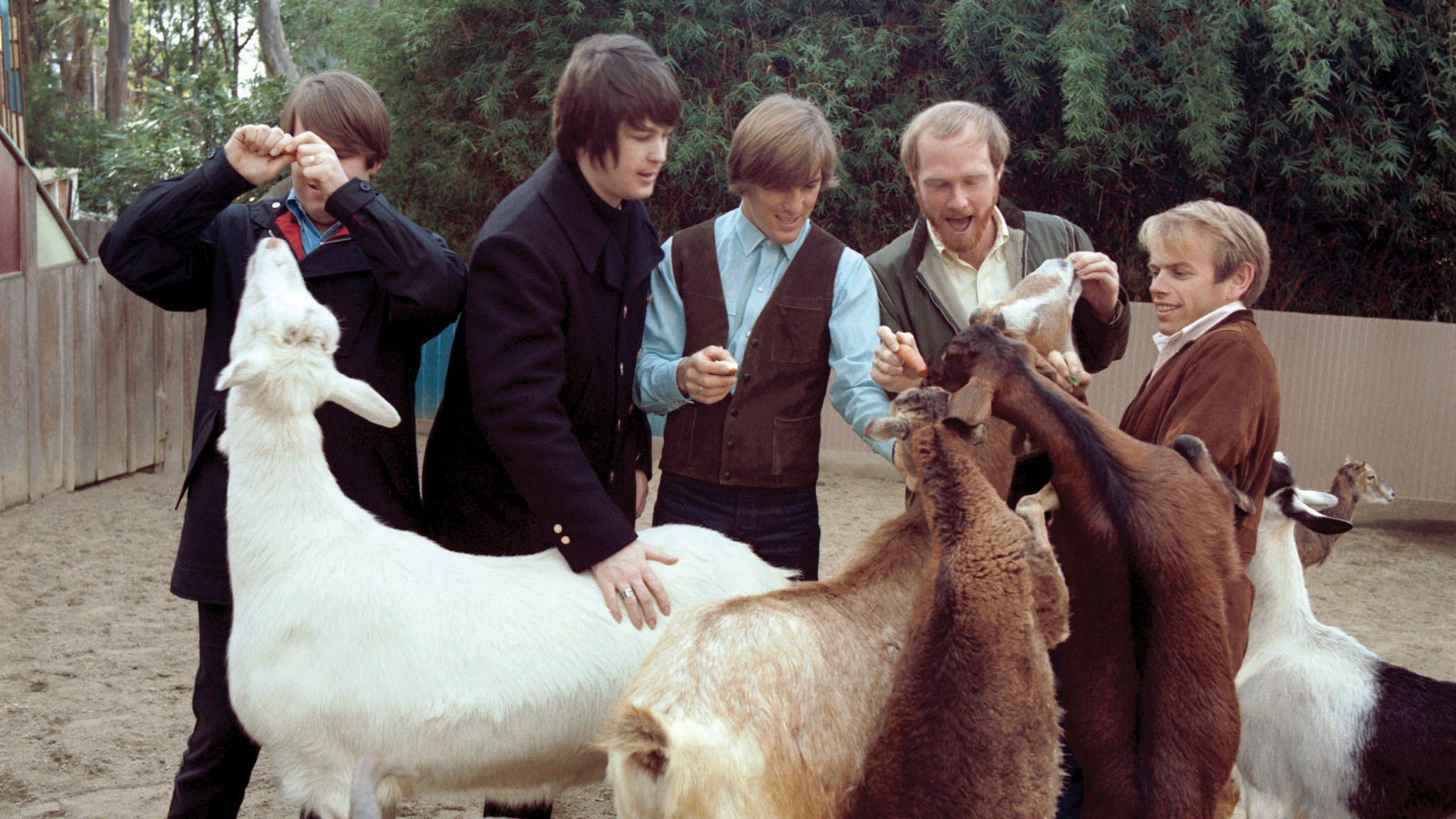
“Everything was played at the same time, and there’s bleed in the room. That’s why the Peter Jackson stuff didn’t make much sense, because why would you want to separate that? It’s actually my job to create that room that the music is being played in.”
So, while room-spanning Atmos speaker setups might be beyond the budgets of many, how would Giles recommend we listen to his work on Pet Sounds? “Well I’m pretty biassed, I did work with Sonos to build the Era 300 speaker system, which is really good. Though it is expensive. The Apple stuff has got a lot better, and it’s quite a nice way of listening to it.
I think we’re at the cusp of people listening and making sense of these spatial mixes in their homes
“What we’ve done at Sonos I think is pretty good, but to be honest there’s not a lot of people creating speakers for this technology well. By using my nine-year association with Sonos, I’ve tried to push them to build a box that plays back these kinds of mixes in a clear way. And it does. I think we’re at the cusp of people listening and making sense of these spatial mixes in their homes.”
Though Giles stresses that the headphone experience of listening to Atmos/spatial audio mixes is definitely getting better, he admits that he rarely uses cans in a professional context. “I never mix on headphones, I never ever mix on headphones. I’ll check mixes on headphones for stereo but my brain adjusts too quickly. I did these tests the other day where I tested a bunch of headphones, I had about nine linked up over Bluetooth playing the same song, and it’s amazing how your brain clicks and just adjusts to what you’re hearing.”
Humans in a room
As a producer at the forefront of bringing yesterday’s cherished canon to the ears of modern listeners, we wonder if Giles thinks we’re heading to a point where classic records are becoming sonically indistinguishable from 21st century releases? “They are and they’re not.” Says Giles, “there’s fewer records that are made by a band in a room anywhere. The music itself should be more important than the sonics.
The Beatles sounded like The Beatles because they were the bloody Beatles! Pet Sounds is the sound of The Beach Boys – humans in a room
”I find it’s really interesting how there’s no guitar solos or instrumentals on modern recordings. There’s no introductions to songs, but bizarrely they’re still quite long. A song like The Beatles’ All My Loving is two minutes long. I think that sometimes there are sounds that artists can only dream of making because of the playing on it. You can’t do anything about the fact that Jeff Beck’s hands played the guitar the way they did. The Beatles sounded like The Beatles because they were the bloody Beatles! Pet Sounds is the sound of The Beach Boys – humans in a room.”
Giles continues, “With remixing older records, we’re getting closer – for good or for bad – to having the same frequency bandwidth as modern records. I do find that when I’m mixing these records, that’s a nice byproduct, but it’s not the most important thing for me. I was really lucky. I’d never mixed a record in my life until I did the Love project for The Beatles. I had to mix that because nobody else was allowed to hear it at that stage. I had no idea what I was doing really, but fortunately it worked out alright.
I said to him ‘Dad, what you did with The Beatles was kind of amazing, wasn’t it’ and he looked at me and said: ‘not as amazing as Brian Wilson’
”The first track I mixed was I Am The Walrus in Studio 3. It sounded great. I thought I’d done an amazing job. Later, I listened to the original and that sounded so much worse in some respects, but also so much better. It was like claustrophobic and fucked-up and weird. Music is never how you remember it, and I always try to make tracks sound like I remember them. Our brain fills in the blanks.
”You can listen to a song with someone you love on the radio, and it can sound like the best song ever, but then you come to our studios with our amazing speakers and it can sound terrible because you’re in a terrible mood. It’s my job to make sure that initial feel applies to the whole record.”
With the Atmos version of Pet Sounds, Giles and his team have created an astounding new way of experiencing this classic record. But for Giles, the credit for Pet Sounds’ enduring longevity goes to one man – Brian Wilson.
“I was with my dad on a plane once, and I just suddenly realised how awesome he was. I said to him ‘Dad, what you did with The Beatles was kind of amazing, wasn’t it’ and he looked at me and said: ‘not as amazing as Brian Wilson’. He explained to me that The Beatles always had him, and he had The Beatles. But Brian Wilson didn’t have anyone, and he went and made this record. Without this record, The Beatles wouldn’t have made Sgt Pepper.”



I'm the Music-Making Editor of MusicRadar, and I am keen to explore the stories that affect all music-makers - whether they're just starting or are at an advanced level. I write, commission and edit content around the wider world of music creation, as well as penning deep-dives into the essentials of production, genre and theory. As the former editor of Computer Music, I aim to bring the same knowledge and experience that underpinned that magazine to the editorial I write, but I'm very eager to engage with new and emerging writers to cover the topics that resonate with them. My career has included editing MusicTech magazine and website, consulting on SEO/editorial practice and writing about music-making and listening for titles such as NME, Classic Pop, Audio Media International, Guitar.com and Uncut. When I'm not writing about music, I'm making it. I release tracks under the name ALP.









